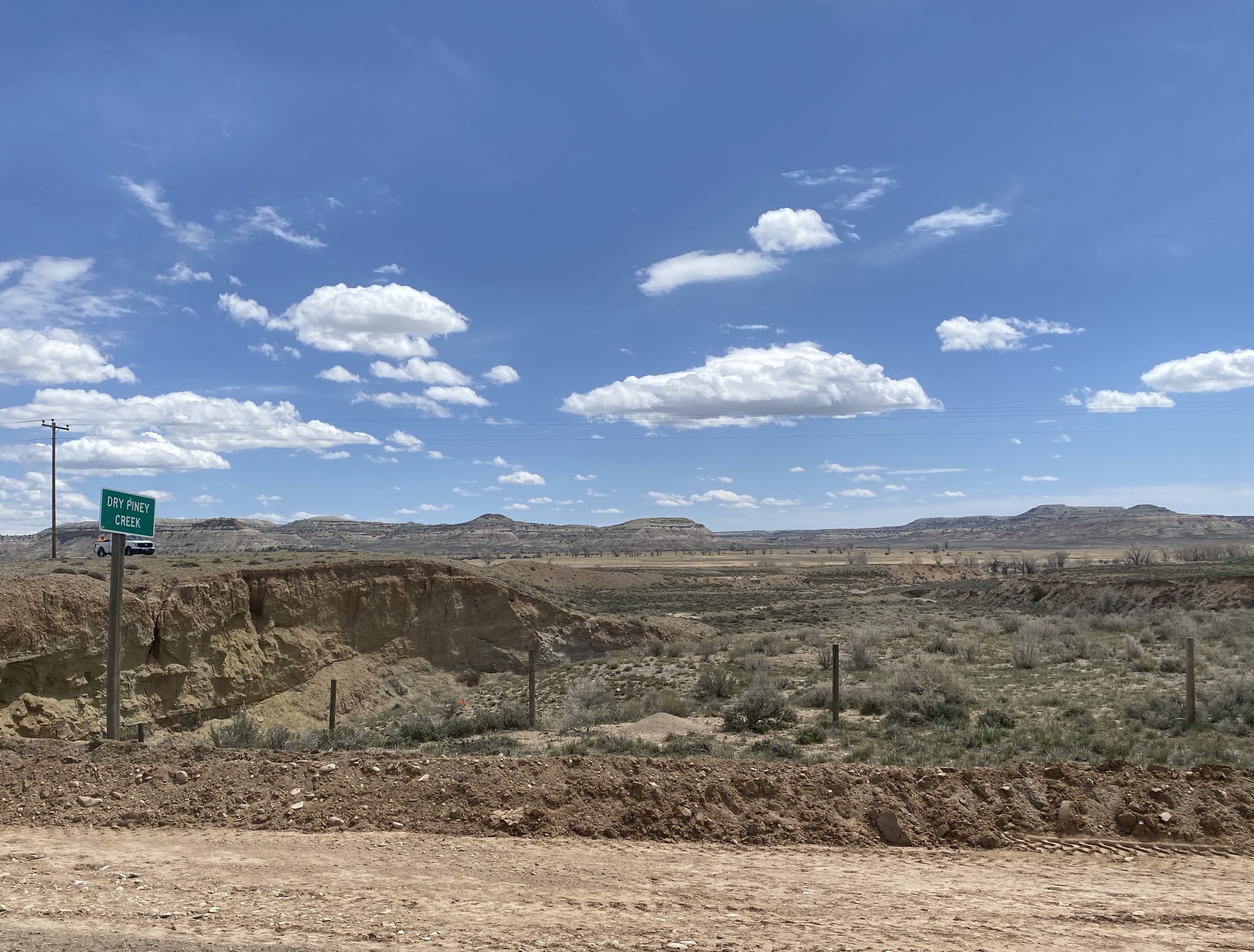Breaking ground at Wyoming's newest wildlife crossing
At first glance, the 19-mile stretch of U.S. Highway 189 between Big Piney and La Barge, Wyoming, seems insignificant. Meandering across the sagebrush steppe, the two-lane highway passes cattle ranches and oil wells, with distant views of the Wind River Range and the Wyoming Range. This section of highway, however, presents a significant barrier for the Wyoming Range mule deer herd that undertakes seasonal migrations. Bisecting their historical migratory path between summer and winter ranges, U.S. 189 has some of the highest rates of wildlife-vehicle collisions in the state. A collaboration of agencies, organizations, and individuals have been working since 2019 to address this issue.
The landscape near the future Dry Piney wildlife crossing in Wyoming. (Photo GYC/Teddy Collins)
On May 10, 2022, the Wyoming Department of Transportation (WYDOT) hosted a groundbreaking ceremony for the Dry Piney Connectivity Project. The project was initiated to address the critical issue of wildlife-vehicle collisions on U.S. 189, which will culminate in the construction of 9 underpasses and associated wildlife funnel-fencing on the 19-mile stretch of roadway.
GYC assisted in raising the 18 million dollars in funds needed for the project. This included helping WYDOT secure a $14.5 million BUILD grant with the Federal Highway Administration, and raising $400,000 in grants through the Knobloch, Volgenau, and National Fish and Wildlife Foundations. The Wyoming Wildlife and Natural Resource Trust (WWNRT) created a match funding opportunity with the non-profit partners, contributing $349,000. Both WYDOT and The Wyoming Game and Fish Commission donated $1.25 million to the project.
Ground is broken at the Dry Piney wildlife crossing. This project will reduce wildlife-vehicle collisions and allow Greater Yellowstone’s wildlife to move more easily. (Photo GYC/Teddy Collins)
On the day of the groundbreaking ceremony, representatives of state and federal agencies, nonprofit organizations, and contributing partners parked at the intersection of U.S. Highway 189 and Dry Piney Road, and were shuttled to the project site. The groundbreaking ceremony featured speeches from Wyoming Game and Fish commissioners, the director of WYDOT, and a WYDOT commissioner, followed by photographs with ceremonial golden shovels. The project is scheduled to be completed by October 31, 2023.
Mule deer at the location of the future Dry Piney wildlife crossing. (Photo GYC/Teddy Collins)
This project illustrates the power of collaborative fundraising when addressing wildlife-vehicle collisions. Wyoming has proven to be a leader in protecting ungulate migrations, and GYC looks forward to working with these agencies and organizations on future projects.
—Teddy Collins, Western Wyoming Conservation Associate
The Greater Yellowstone Ecosystem is the land of 49+ Indigenous Tribes who maintain current and ancestral connections to the lands, waters, wildlife, plants, and more.




